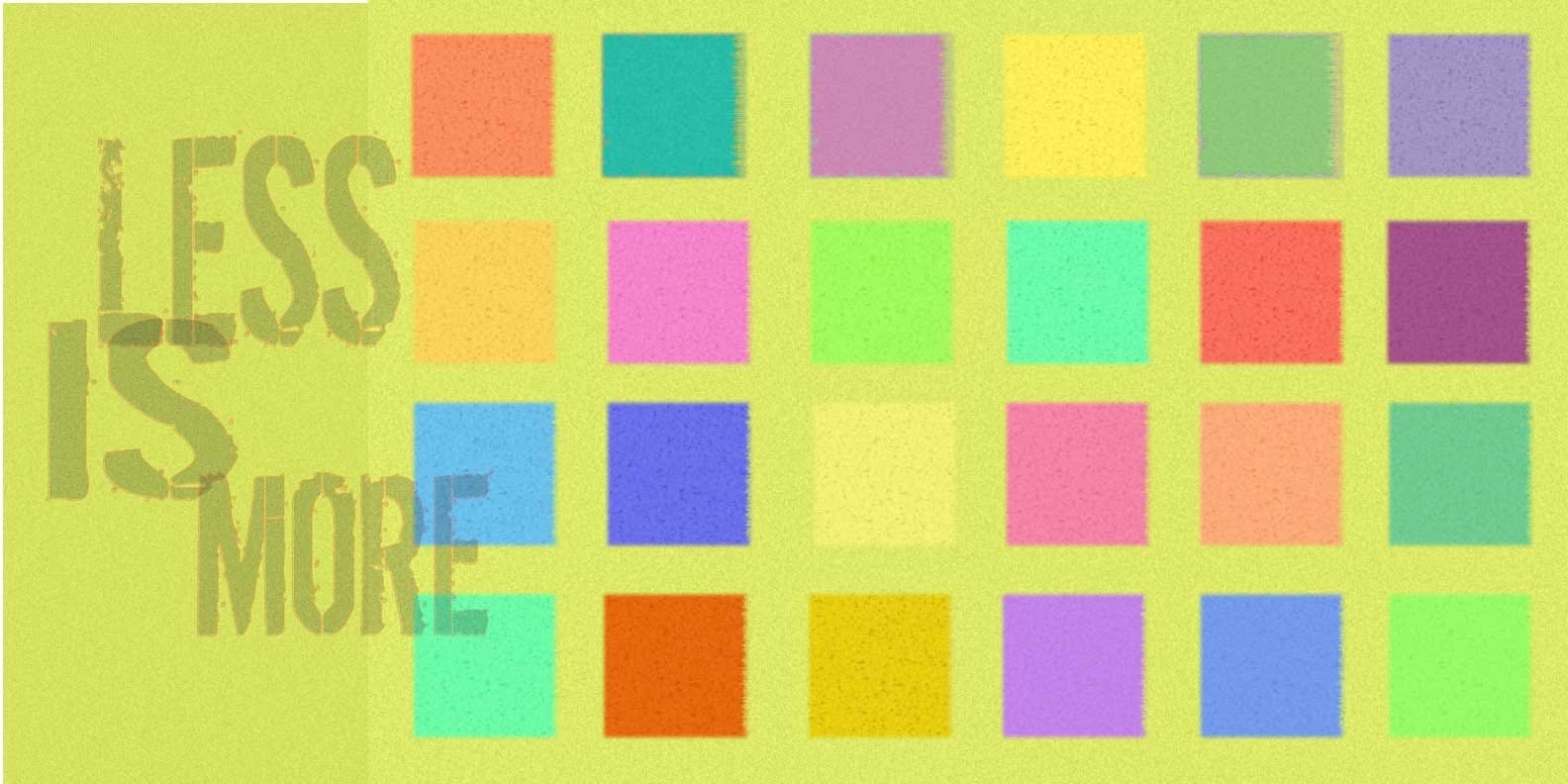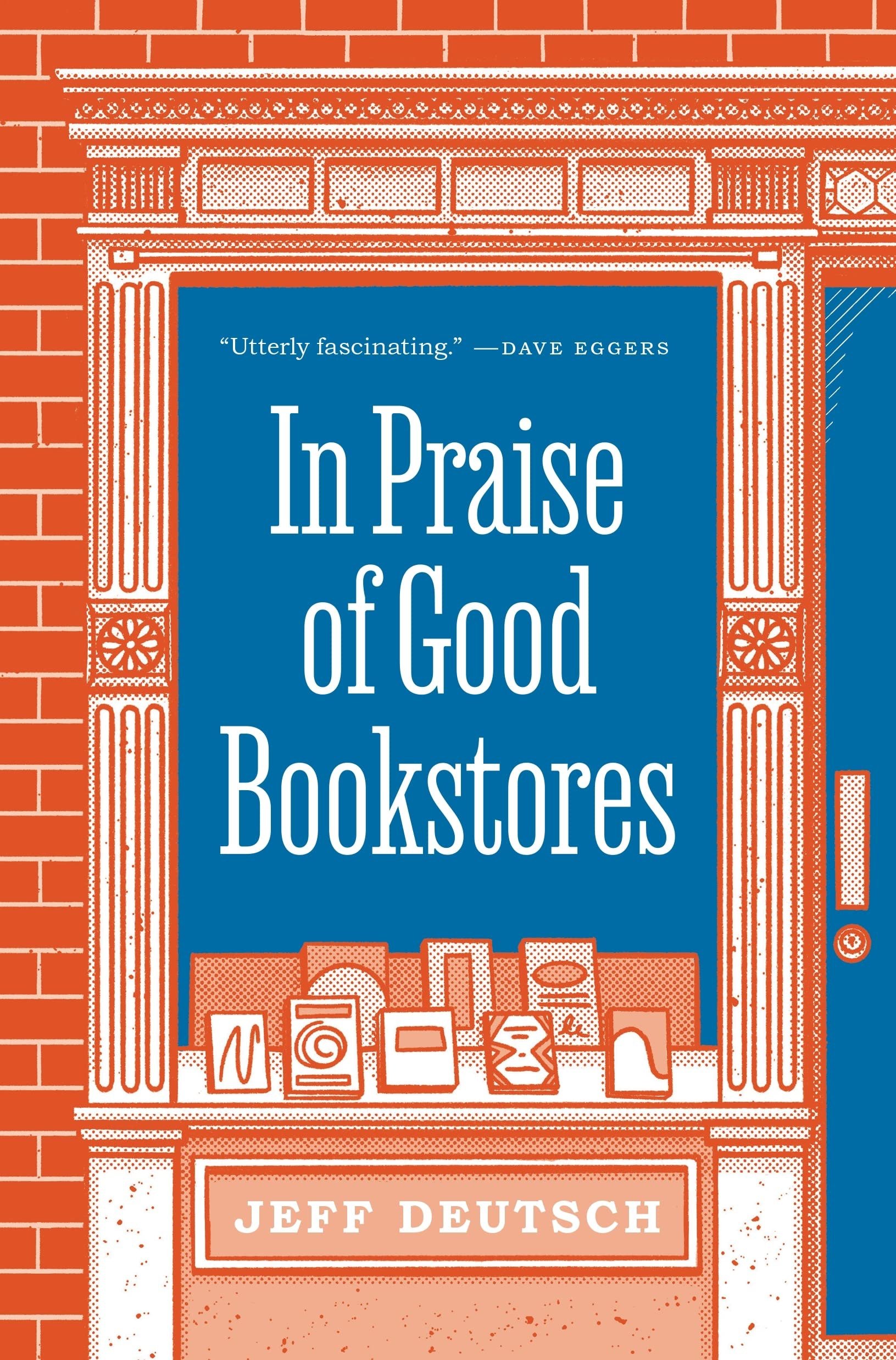The Tao of TikTok.
In the past 1000 days the growth of TikTok has disrupted the media landscape.
It has shot past Google to become the most popular domain and the time spent daily on it is greater than all of Meta’s properties (Facebook, Instagram, and WhatsApp) and it is potentially even carving into the time spent watching analog television and Netflix!
It has become the key cultural currency and meme generator unleashing thousands of creators with followings of over a million people all around the world.
This article by Professor Scott Galloway is an absolute must read to understand the breath-taking rise of the platform.
Every individual and business stand to learn lessons from this amazing rise and its implications on the future of business, media, and culture.
A moat and walled garden can rapidly change to enable self-imprisonment.
The key asset of Facebook was the network effects of its social graph (all your “friends” were there) making it very difficult to launch a new competing entity. Its network effects, social graph scale and roach motel model of walled garden was a wealth generation engine for the age.
One of the few companies that competed against this social graph with some success was Snap driven in great part by its sheer product and design ingenuity. However its growth was blunted by Instagram carbon copying Stories and leveraging the strength of its scale.
TikTok practiced asymmetric warfare by eschewing the social graph and replacing it with an interest graph. Its algorithm and learning loops allowed individuals to be exposed to a spectrum of great content without having to bring any friends or create any content!
It then positioned itself as an entertainment platform versus a social platform.
Now Meta is responding by dialing down its social graph and working to create intent graphs with its Reels projects and by dialing up algorithmic results versus social graph results injecting all sorts of drugs into Instagram irking its users and creating some lurching Frankenstein mix of image/video and social/content graph.
One should never underestimate Mark Zuckerberg and the very deep talent pool at Meta as they seek to dramatically pivot their business but a lesson to be learned is that assets can become anchors and to win as an outsider one needs to change the rules of the game.
Every company should pay attention to whether what made it great can keep it great and wonder whether its competitors are the usual suspects sharing its perch in heaven or someone emerging from the slime with audacious new rules of engagement.
Focus and simplicity wins.
Everything about TikTok is built around focus and simplicity.
You can start right away and it simple to use. You do not need friends or must create content or enter any data to begin to enjoy the product.
And it is focused.
Just video.
One video that takes over the phone screen vertically.
No distractions.
For the viewer.
But more importantly for the algorithm and the learning models which do not have to deal with anything else.
It sees everything and learns everything fast.
And as your interests change (do you swipe, linger, replay?) it morphs and can stay current with your interests, tastes and passions.
Fast. Clean and Simple.
Companies and individuals who focus on core competencies and keep every part of the experience and what they do as simple as possible tend to win and we see it in spades with TikTok.
God-Like Power to unleash creators.
While a significant part of TikTok’s success is driven by its algorithms and training sets based on video usage plus simplicity, a third factor is the very powerful tools it gives creators that make it easy for people who want to create to do so.
This includes all sorts of lenses and filters that give one much of the power of Adobe’s Creative Cloud on a phone with no need for expertise plus music tracks and the ability to sample, build and morph other creators works.
Every individual has in them an ability to create and by enabling folks with amazing tools, the power of music, a set of starting blocks and an algorithm that enables newbies to break through and not just those with large followings like the Kardashians on Instagram and Mr. Beast on You-Tube, TikTok becomes the canvas for the rest of us.
For those unheard from. The crazy ones. It is the platform for the rest of us. The Apple versus the IBM.
The best companies serve their customers and ideally enable, empower, and ideally give them God Like power. Steve Jobs said a computer was a bicycle for the mind and Apple has combined beautiful design, utter simplicity, and empowering tools to become the world’s most valuable company.
TikTok is following the same rule book and it is probably more loved by its creators and users than its competitors are because it enables, empowers, and entertains them.
Too many companies give lip service to empowering and enabling but it is becoming the currency of success as power moves to individuals, talent, consumers, and customers. Often senior leadership in companies are too far removed or too busy speaking to each other or drooling over some useless political machinations and power operas to understand the revolution that is upon them. Smart leaders leave the towers of power and start thinking like creators and the builders they once were once again.
The story and the spreadsheet versus just the story or the spreadsheet.
For years the media business was driven by the belief that content was king. This began to be suspect as Google and Facebook and others hoovered up all the dollars proving that the people who could point to and drive traffic to content while capturing intent along the way were king.
Then the pendulum swung, and it all became data with Facebook combining excellent data skills that algorithmically transformed so-so content into an elixir that drove hundreds of billion dollars.
Netflix once had people believing it had a data sauce when its real success was driven by the genius of Reed Hastings to anticipate streaming, some first-class content they made for themselves and the nocturnal slumber of their content partners who woke up a decade later to understand they had been fueling their competitor with their content. Data played a part but just one part and by itself is no longer enough.
Now that Disney, HBO, and others have caught up it is clear there is no special data sauce and its back to pricing and content. This August it is going to be “House of the Dragon” HBO’s prequel to Game of Thrones versus Amazon’s “Power of the Ring” its Lord of the Ring’s spinoff versus Netflix “Sandman” and Disney “She-Hulk” combined with all sorts of pricing bundles.
The reality is that data and math of the spreadsheet matters. But so does meaning and the magic of storytelling.
TikTok combined the power of math (algorithms and teaching models) with music and movies (video) to create a juggernaut.
TikTok is an example of story and spreadsheet coming together in harmonic balance and every successful firm of the future will combine creativity and data, storytelling talent with data druids and technologists.
External forces intervene in every business.
Every individual and business plan are at the mercy of the four forces driving the future. These are the forces of multi-polar globalization (vs unipolar or western centric globalization), demographic change including media behavior, technology, and the long-term impact of Covid-19.
TikTok leveraged demographic shifts and technology of the second (mobile and social) and third connected ages (AI and 5G) to become what may be the future of entertainment and television. But the geo-political dynamics of multi-polar globalization and its pressures (ByteDance the owner of TikTok is a Chinese company) have limited its efforts to go public or buy a television network or more.
Geo-politics is the biggest near term challenge to TikTok.
Mark Zuckerberg was not being subtle when he shared a picturing of him surfing with an American flag in his hand…. Scott Galloway who is no fan of Mr. Zuckerberg has constantly brought up some Manchurian Candidate like scenarios that make him wary of TikTok too…
A reality every successful individual and company CEO and company should never forget: The external forces of globalization, technology, demographic changes and covid-19 must contend with.
You=Start-Up.
Photography by Sandra Bartocha
Every individual, team and company might benefit from periodically going through an exercise of re-imagining themselves as if they were a start-up beginning again with a blank sheet of paper.
A time to consider this exercise is either when you feel you are at an impasse, or you sense a rapidly changing environment.
Even if neither of these occur re-thinking things every three or four years can be re-vitalizing in either confirming the contours of your life, company and career or adjusting without being under much external duress.
Photography by Sandra Bartocha
The Re-imagining exercise.
The exercise consists of four steps.
Asset listing.
The real constraints.
Define/Select the challenge.
Re-invent and Re-Imagine.
The exercise should be done with a diverse (backgrounds, skill sets and more) group of people if you are doing this for a company or team but also if you are doing this for yourself.
If you are doing it as an individual re-thinking your future include at least two or three people besides yourself who know you well (a partner, a colleague, a mentor/old boss, a friend).
Diverse views ensure planning with a sense of upbeat reality versus delusional fantasy.
Photography by Sandra Bartocha
Asset Listing.
Every individual, team and company have assets.
These assets may be depth of talent, financial wealth, heritage, expertise, skills, reputation, good will, clients, brands, family, connections, partners, distribution networks…
Sometimes an asset maybe you, your team and company have little to lose.
No one has nothing and often much more than we originally believed when we take stock.
List the assets.
Photography by Sandra Bartocha
The real constraints.
Now list the constraints that you must live under and cannot get rid of under any circumstances.
Many constraints are works of imagination and not real constraints.
Usually there are only three real constraints for companies and teams and four for individuals.
a) The Law: You cannot break the law or do something illegal.
b) Science: You cannot pretend there is no gravity for instance or imagine technology that does not exist today.
c) Financial Reality: Limited funds or the need to break even in x number of years.
d) Family: For individuals doing this exercise an additional constraint is their family reality (which often is their biggest asset but limits optionality).
In most cases the constraints tend to be of the financial type and these need to be interrogated and not accepted at face value.
Gillette placed a constraint of protecting margins versus launching a lower cost blade and believed they could not cannibalize their existing retailer network by selling directly via subscriptions and therefore eventually suffered an 8-billion-dollar write-down due to losing share to Dollar Shave Club and others.
Another big constraint companies or individuals place on themselves is allowing themselves to be narrowly defined. We compete in this category which we define like this… (Hotels did not pay attention to Airbnb, auto companies did not pay attention to Tesla or Uber because they self-limited and self-curtailed themselves.)
If you do not have a skill, you can acquire it. If you company’s scale does not allow it to move fast you can start, fund and staff a smaller unit or buy a smaller unit.
Individuals often practice all sorts of self-limitation or self-curtailment such as pricing themselves out of their dreams by living a lifestyle that impresses others but robs them of their options or believing it is too late to re-imagine or re-start.
It is never too late to become who we want to be or are.
List the absolute constraints.
Photography by Sandra Bartocha
Define the Challenge.
What is bothering you or creating a problem for your team or your company?
A new competitor creating a loss of market share? Category dynamics reducing your relevance or competitiveness in winning or keeping Clients? High employee turnover or inability to attract or retain clients? Stalling out at work and not growing?
Or it may be more of an opportunity?
How to scale and build expertise in a new category? How to deal with demand that you cannot meet or deliver with a certain quality slippage? How to take the plunge into a new career?
One of the most important steps in solving for a problem and coming up with a new solution is to ask the right questions. For more on this please read “The perils of asking the wrong questions”
Here are two ways you and your firm may minimize the risk of asking the wrong question:
1. Look at the question you are trying to ask and turn it around and see if it makes more sense.
Here is an example: Should you focus on how to get the cheapest arrows, or should you be asking how you can get the best archers?
Paying more for quality is always cheaper in the long run since it/they tend to work faster, think better, last longer and signal to your organization that you understand that buying cheap pigs maybe buying diseased pigs and could lead to poisoned hot dogs.
2. No question is off limits. Nothing is written. No sacred cows.
Time and time again we find that the idea for the next big thing was born in the last big thing, but the management of the last big thing squashed the idea since it did not fit in the business model.
Or we find that the problem was clear for all to see but was looked away from since it would mean the person who called it out might lose their job.
The brown moist thing in the middle of the table is not always a brownie it could be a turd. To ensure people call out the turd on the table please read “The turd on the table”.
Photography by Sandra Bartocha
Re-Invent and Re-Imagine.
You can access any or all the assets you have listed.
Your only constraints are those of the law, the rules of science and some real “impossible to get rid of” constraints.
You have a clearly defined challenge.
Now imagine if you were starting with a blank sheet of paper.
How would you address the challenge being able to leverage all your assets but none of the stuff you do not want while working with the limited constraints.
Imagine you are a new competitor trying to disrupt or replace you.
With all your assets, none of your legacy thinking and limited constraints what would you do?
Everything is flexible.
You and the people who are working with you will come up with brilliant and compelling ideas because you will have changed your mindset in three ways.
a) You have gone from defense to offense.
b) You have stopped being constrained and anchored by legacy mindset and fear.
c) You have unleashed the creativity and positivity accompanying building and solving.
Once you have done this exercise and have generated one or two great ideas it is time to make them real and tangible in a hurry.
Why? If you have thought of something that could solve or address a challenge better than you are doing now it won’t be long till one of your current competitors or a new competitor puts it into motion.
To be a start-up one does not need to just think like a start-up.
But to take the plunge, act with urgency and move forward.
Just start.
The Future of the Internet
There are four seminal dates in the history of the Internet:
October 29, 1969: On October 29, 1969, at 10:30 PM, a computer grad student named Charley Kline at UCLA sent a message to SRI (Stanford Research Institute.) It was the first connection between computer networks.
We set up a telephone connection between us and the guys at SRI…
We typed the L and we asked on the phone,
“Do you see the L?”
”Yes, we see the L,” came the response.
We typed the O, and we asked, “Do you see the O.”
”Yes, we see the O.”
Then we typed the G, and the system crashed…
Yet a revolution had begun…
1 January 1983: January 1, 1983, is considered the official birthday of the Internet. Prior to this, the various computer networks did not have a standard way to communicate with each other. A new communications protocol was established called Transfer Control Protocol/Internetwork Protocol (TCP/IP). This allowed different kinds of computers on different networks to "talk" to each other. ARPANET and the Defense Data Network officially changed to the TCP/IP standard on January 1, 1983, hence the birth of the Internet. All networks could now be connected by a universal language.
6 August 1991: Tim Berners-Lee published the first ever website while working at CERN, the huge particle physics lab in Switzerland.
30 August 1993: CERN puts the World Wide Web software in the public domain. Later CERN made a release available with an open license, a surer way to maximize its dissemination.
Until 1993 the Internet (and its predecessors like ARPANET) were both difficult and highly limited in their use.
Beginning in 1993 due to CERN’s decision to make the World Wide Web software available to all with an open license we entered The First Connected Age when the world began its 30-year migration into cyberspace.
The Three Connected Ages.
In 1993 with the advent of the World Wide Web we entered The First Connected Age where we connected to discover and connected to transact. This is today known as Search and E-Commerce which are forces that have given rise to companies like Amazon and Google.
In 2007 we entered The Second Connected Age (which built on and did not replace The First Connected Age) when we were connected all the time, connected to everybody, and connected to entertainment, due to smart phones, social networks and affordable and pervasive broad band. These three advances which we call Social, Mobile and Streaming, have re-ordered society, politics and culture while creating juggernauts like Apple, Facebook and Netflix but also enabling everything from Uber to Airbnb to Dollar Shave Club to Spotify.
The world we live in today is hard to describe to someone thirty years ago.
But we have not seen anything yet…
Four new forms of connection will re-order society, work, and the future much more in the next decade than the past three decades.
These are the four new connections that will drive The Third Connected Age:
Data connected to data which is machine learning the form of AI that is most scaled.
Much faster and resilient forms of connection via 5G.
New ways of connecting including Voice, Augmented Reality and Virtual Reality.
New Trust Connection built on the Blockchain.
Web 3, Metaverse, Tokens and DAO’s are connected but not the same.
The entire world of Web 3, Metaverse, Tokens/Wallets and DAO’s (all of which are different from each other but connected to each other) are just one subset of all the changes underway in The Third Connected Age.
Web 3 is as much an ideology as it is a set of technologies. The central tenets of Web 3 are Open, Decentralized and Composable. And a belief that the creators, builders, and users should have much ownership and benefits as investors and companies.
Tokens (NFT’s or Non-Fungible Tokens, are one type of many different types of tokens including Governance, Security and DeFi tokens. Tokens are often stored in wallets and this combination of tokens and wallets will help orchestrate ownership and value exchange.
Metaverse is a term that includes both Augmented Reality (AR) and Virtual Reality (VR). Augmented Reality layers the digital onto the physical (think of a head’s up display in a car) while Virtual Reality creates a simulacrum of the physical world in digital space. Just like Windows and MacOS were the operating systems of The First Connected Age joined by iOS and Android in The Second Connected Age there are billions being spent by Apple, Meta, Microsoft and others to create both hardware and software to operate between the physical and various manifestation of the digital world of The Third Connected Age.
DAO’s are mission driven communities with a treasury of tokens that enable ownership, governance and financial benefits that ideally will enable a more transparent, autonomous, efficient, and anonymous form of governance. It is the way the new world might be organized.
Web 3 Ideology.
The Internet was first designed to be decentralized enough to withstand a nuclear strike. By providing a free license to the World Wide Web CERN engendered a belief in openness. Composability accelerates innovation by enabling developers to build new use-cases on top of existing projects. The code of that new project, in turn, serves as yet another building block for someone else, leading to an ever-expanding library of code that developers can tap into to build their own ideas. Venture capitalist Chris Dixon describes it aptly when he wrote, “composability is the ability to mix and match software components like Lego bricks.”
While all of us have benefited from the Internet a significant part of the upside has gone to investors and some businesses but builders and particularly creators and users have shared very little of the wealth their content, their data, their networks, their attention, and time have enabled. Think of all the content, data, and time you give to Facebook. Zuckerberg buys islands in Hawaii, and you get to connect with other people and get likes!
The ideology of Web 3 is aligned with what most people want which is to be recognized and rewarded without being charged rents of 30 to 70 percent for the benefits of using a platform.
There will be middlemen and women in this new world. Consider them “enablers” who will make it easy for us to use the new technologies, to be discovered or provide other services but they are likely to charge a tenth of the total value created versus taking the large slices of todays “aggregators”.
Tokens/Wallets.
Today most of the talk of tokens are one type of token which is the NFT but there are many other types of tokens. A way to think of tokens is that they provide some combination of four utilities: a) a currency, b) governance rights, c) membership and d) status.
An analogy to tokens that we may all be familiar with are airline miles. If you fly a lot, you get rewarded with airline miles which you can use as a currency. When you fly a lot, this currency gets you the status of a higher level and provides membership into lounges and clubs and the airlines pay more attention to what you think about how they govern themselves. Most tokens are like airline miles where one person’s airline mile on American is the same as another person’s airline mile on American and most tokens operate like this.
Non-Fungible tokens on the other hand add a form of uniqueness in that each one is different from each other and thus NFT’s have been particularly popular with the artist and creative communities. As the chart above shows NFT’s are significantly improving the rewards to people who create and their fans versus the platforms.
Tokens are usually collected and operated using wallets like Metamask. Increasingly many Web3 initiatives have a person signing in with their wallets and not their Facebook or Apple identities or their email.
Think of tokens and wallets as the future of identity and CRM (Customer Relationship Management) if you are a business leader or a marketer. This new age is dawning.
Metaverse.
In one way the Metaverse is here in the Web 2.0 world ,and it is called gaming. Gaming is a 155-billion-dollar industry (bigger than TV, Movies, Music combined) and is seen as the gateway to the next generation of Virtual Reality. It is why Microsoft is willing to pay 67-billion-dollars for Activision Blizzard and both Disney and Comcast were rumored to be interested in Electronic Arts. Netflix is likely to regret that it did not leverage its once valuable stock to buy a major platform like Sony bought Bungee.
Skeptics may snort “in your dreams” and the answer to that is that 14.8 million people are dreaming.
These are the sales to date of Meta’s Oculus Quest 2. (Try one or if you can afford one the $30 get one). Now imagine the technology getting exponentially better and possibly cheaper as the next generation from Meta and the products that Apple and Microsoft have in development are released by early 2024 if not before!
Terry Kawaja, founder of leading digital investment bank Luma Partners, shared an insight that given the VR/AR nature of the Metaverse we may first experience elements of it at scale in automobiles! Step into a modern electric car, particularly an electric one and you are in a world of screens with AR and Voice already deeply linked to its functionality.
It is not just technology but the underlying human need that these new technologies will enable that makes one believe of their future potential.
First, Humans want to have God-Like power.
The companies that enable us to cross distance and time such as Google which allows us to find anything with Search or visit places with Google Earth, or Apple that allows us to connect everywhere projecting our images and videos or Meta that enables us to connect for free or Amazon that brings the worlds bazaars to us have become the most valuable companies in the world.
At one time it was the railroad companies and oil companies and telephone companies that allowed us to bridge distance and time. Pharmaceutical and medical companies allow us to live longer lives.
These new Third Connected Age technologies will give us amazing powers and we will gravitate towards them just as we have in the past.
Second, they allow us to have multiple identities.
Our minds are imagination machines, and it has far outstripped the physical carrier of our bodies. Avatars and virtual worlds allow us to be a range of us and constantly re-invent and try on new lives and live in multiple worlds.
Third, we are about to see the greatest unleashing of human creativity as more and more people gain access to new ways to express themselves, to project their presence and be rewarded for their work.
The Signal /The Noise.
There are many people who believe that the Web3/Token/Metaverse/DAO eco-system is some combination of BS, a Ponzi scheme promoted by a collection of hucksters, scammers and the delusion filled who are high on their own gas and maybe other substances!
Check out Molly White’s site that compiles many of these examples. Watch Dan Olson’s “The Line Goes Up Video” a brilliant take down of NFT’s. Read Scott Galloway. Monitor the headlines of Celsius and other companies going into bankruptcy. Measure the plunge in engagement of NFT markets or speak to anybody who invested in crypto for the first time beginning nine months ago.
The bubble has burst. Fake! Big balls of BS!
No practical use or problem solved.
An uncertain set of technologies in search of problems that do not exist.
Maybe.
There were and probably will still be many Ponzi schemes. Much of what is called Web 3 can be done without tokens, block chain or any of the new-fangled stuff. The Oculus Quest 2 while impressive is still rudimentary. Most coins will be and should always have been worthless.
But…
Remember 2000 to 2002 when the Nasdaq crashed from 5048 to 1114?
That was the noise.
Internet usage almost doubled from one third of all households to two thirds of households during the 1999 to 2003 period with massive increases in broad band connections.
That was the signal.
The crashing price of crypto, NFT’s and the revealing of scam artists is the noise.
Be smart. Read about all the stuff that is going wrong. Be wary.
But learn by getting involved at minimum as an individual (a lot of future opportunities are likely to be available to people who are conversant with the new landscape) and ideally as a company (organizations and people tend to adjust slower than technology so it’s not too early to begin to build centers of excellence and explore partnerships) and you may see some signals that reveal the amazing potential of what is next.
This signal maybe discerned in the hundreds of billions of dollars companies like Microsoft, Apple and Meta are investing in the space even today. Or the $4.5 billion A16Z raised for their oversubscribed Crypto Fund.
The fact that the best talent from the highest rated universities is going to Web 3 companies even this year in the middle of what looks like a meltdown.
That a spectrum of musicians from Nas to Chainsmokers have embraced the new world at Royal.io while Tom Brady, Tiger Woods, Wayne Gretzky and more have done the same at Autograph.io.
That many marketers are trying to understand the opportunities and challenges of tokens and wallets for the future of identity and CRM programs.
Or how companies like Nike recently having bought RTFKT and filed for several patents in Third Connected Age technologies.
Or how leaders everywhere are working to re-think their businesses such as Insurance companies wondering how to underwrite NFT losses or the purchase of Virtual Land.
There are a lot of signs that this is like 1993 and 2007 which marked The First and Second Connected ages which changed business, society a creating new opportunities and threats.
We are at the early days of what is likely to be the most compelling decade or more on the Internet.
Welcome to The Third Connected Age.
The Future of the Internet!
100!
This is the 100th edition of my thought letter!
For one hundred Sundays it has been offered as a “gift” that might be of some value by helping the reader see, feel and think differently about how to grow themselves, their teams and their business.
Like a gift, it was written in the hope that it would be shared freely and widely generating goodwill for the person who shared and for the writer in return for each reader’s valuable attention and time.
The thought letter has been 100% opt-in and its growth has been completely organic through its forwarding, sharing, re-posting on social media, re-printing on other platforms and word of mouth. No email lists were purchased and not a single dollar has been spent in advertising or promotion.
Beginning with about 100 readers the thought letter now enjoys a weekly readership of 25,000 people.
The most popular post “Re-Thinking Presentations” has been read over 100,000 times so far.
Other popular pieces reveal that there is a deep angst about the future of work (what is the future of the work? What is the role of offices? How does one manage a culture and what is culture in the first place? How does one balance the expectations and needs of different people and age cohorts? How does one adapt to distributed work? How will the next generation of technology change work?)
There is a great interest in the topic of career guidance in a transforming world (How to deal with change? How to manage a career? How to be a better leader? How to remain relevant and upgrade one’s skills in a world where knowledge has a shorter and shorter half-life? How to write a presentation or run a meeting?)
And there is a hunger for advice on how to grow as a person and get the most of time (What is success? How to become a better person? The importance of wisdom, dignity and connectedness.)
For this 100th post as a thank you to all the readers and to expose those who joined midway or later in the past two years to the topics covered, here is a curated list of the 40 posts that have resonated the most organized into a dozen key categories.
Have also created a page on my website so you can bookmark to it easily without needing to retrieve this email. As always thank you for your time and please feel free to share this post and/or the link to anybody you believe may benefit.
The rest of this post is best read and navigated here: https://rishadtobaccowala.com/100
On Books,
The author of this post loves books and reads at least one a week.
All of them in analog form which are marked and underlined using a very special instrument( Faber Castell pencil )and then the best lines are copied by hand using a decades old Mont Blanc pen onto parchment paper in leather bound notebooks to be re-read at a date in the future.
The reverence for books extends to their habitats such as bookstores (and the Chicago Seminary Bookstore on the University of Chicago campus is one of the finest bookstores in the United States if not the world) and libraries as sanctuaries.
Every line in this post about books, bookstores and libraries are a conflation of the lines I have copied over the years. Not one of them are my own. All I have done is combined them into new arrangements to reveal how sampling books alone can create something interesting on any topic which in this case is books, bookstores, and libraries. Everything italicized is literally someone else’s sentences or paragraphs and if this was a published book my editors would have me hunt down and attribute every quote. Please bear with me for not doing so in putting together this piece but do note that almost everything about bookstores is from “In Praise of Good Bookstores” by Jeff Deutsch who runs the Chicago Seminary Bookstore.
Books.
The book has proved one of the most useful, versatile, and enduring technologies in history. It’s portability, ease of reference and ability to concentrate a large amount of data made it indispensable. It is difficult to imagine how some of the greatest turning points in history would have been achieved without it.
Life without books would be a mistake.
One is twisted into a more complex shape when reading a great book.
Books give me “me”
The best books are like surgeons. They change you but you do not remember them, and they leave no external mark. Drugs get flushed from our system but not the best stories. One story can change you because it a sequence of language that produces a chemical reaction in the body.
Books are ways to escape ourselves. They are another form of dreaming. They are the magic of using black marks on a white page to conjure people and place out of nothingness. They are the closest we will be to becoming someone else or living someone else’s life.
When a story is told it is not forgotten. It becomes something else. A history of what we were. A hope of what we can become. They traverse across time and space like a phrase drifting down the centuries to reach someone in their Michigan classroom.
Stories are data with a soul.
We undervalue books. Many people who would think nothing of spending $17 on a couple of lattes and some baked goods, bristle at spending the same amount for a copy of a book that might provide untold hours of reflection and unquantifiable fulfillment.
A book is a gift. A commodity has value, and a gift does not. A gift has worth. Value is the comparison of one thing with another. Worth is something that we prize but we cannot put a price on.
The most important things in the world seem to be impossible to measure whether it be meaning, knowledge, curiosity, beauty, kindness, justice, wisdom, and love. And books.
If it is wisdom alone that makes the price of books (and wisdom is an infinite treasure for humans,) then the the value of books is unspeakable…
Bookstores.
The good bookstore sells books, but the primary product, is the browsing experience.
One of the great benefits of browsing is the rumination it evokes.
Browsing is a form of idleness that energizes just like there are forms of productivity that are wasteful.
Every good bookstore allows the reader to get lost in it.
A great bookstore is a total environment, where nothing except books seem to exist fully, where everything else is either not important or already in the books.
Great bookstores curate, convene and focus on community to separate themselves from their digital counterparts.
They understand that the book with which one was familiar was not, in most cases, the book one needed. It was the unknown neighbor on the same shelf that contained the vital image.
Books have destinies as objects and people appointments with them. And bookstores bring them together.
How many books must ripen on the shelf before we are ready for them?
Bookstores are scarce because we undervalue them, and good bookstores are scarce because we undervalue our cultural wealth.
Libraries.
The library as institution is ancient. Dating back thousands of years though Egyptian, Greek, Persian and Roman history, the first libraries were primarily archives for storing information. Whereas the classical library was exclusive and catered to the privileged classes, the modern library is inclusive and accommodate all. Hence it is said the library of the future will break down the barriers further. This is an interesting task for the architect to design a building that defines conventions and looks to the future.
The rules of libraries:
Books are for use.
Every reader his or her book.
Every book its reader.
Save the time of the reader.
The library is a growing organism.
A great bookstore or personal library has cherished the thing of the mind; it has insisted on including all points of view, but it has been selective.
Every day from the library a book is borrowed and whether in the reading room, the bus home or in a coffee shop a discovery will be made with something in the book and each reader will find such epiphanies, such enrichments of mind and changes of heart can be the stuff of every day…
In the ideal world every person would possess their own library. The walls of each home would only seem to be made of books; wherever one would look one would only see spines: because every real book is a mind, an imagination, a consciousness. Together they compose a civilization or even several. And a library is an archive of personal history where returning to a book after years and looking at the lines you underlined you discover how you may have both remained the same and changed over the years.
The book does not change but you do and they help you mark the passing of time and the changing of you.
The “thingyness” of books.
Books have a “thingyness” to them. One you can feel, hold and smell.
There is much to be gained by eBooks: ease, convenience, portability. But something is lost: tradition, a sensual experience, the comfort of thingy-ness — a little bit of humanity.
We shall not understand what a book is and why it has value if we forget how important to it is its body, the building that has been built to to hold its lines of language safely together through many adventures and a long time. Words on a screen have a visual quality to be sure but they have no materiality, they are only shadows and when the light shifts they will be gone. Off the screen they do not exist as words. They do not wait to be reseen, reread, they only wait to be remade, relit. One cannot carry them beneath a tree or into a side porch. One cannot argue with them in their margins; One cannot enjoy the memory of their dismay, when perhaps after years, they return to a treasured copy of a book to find the jam they inadvertently smeared there…
Another “thingyness” of books is how you feel after you spend an hour with a good book compared to the conveyer belt of distractions that we scroll through on our digital devices which have been algorithmically optimized to maximize someone else’s objective.
One often leaves you empty or enraged while the other leaves you uplifted and enhanced.
Upgrade your mental and emotional operating system.
Read.
A book.






























